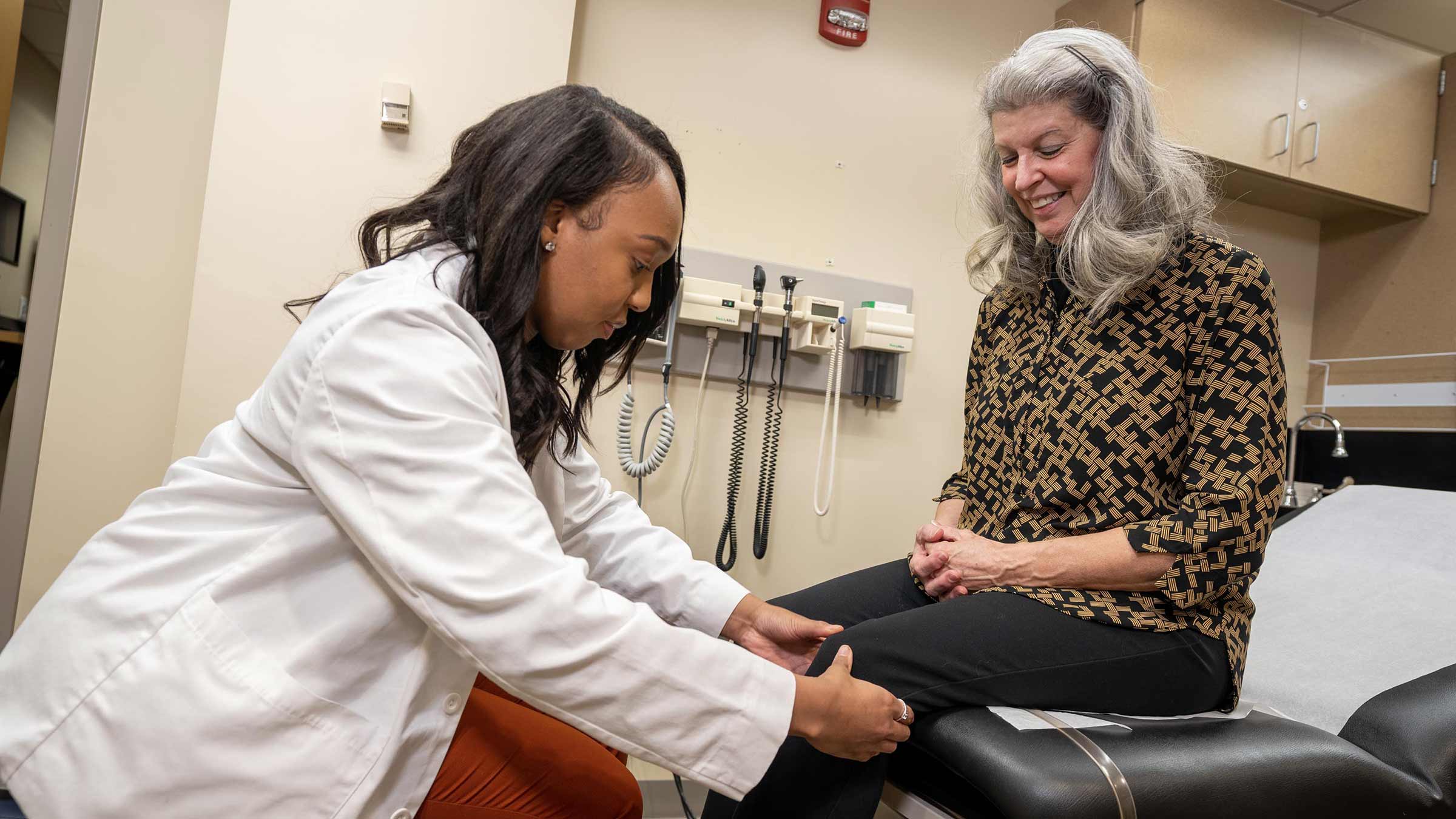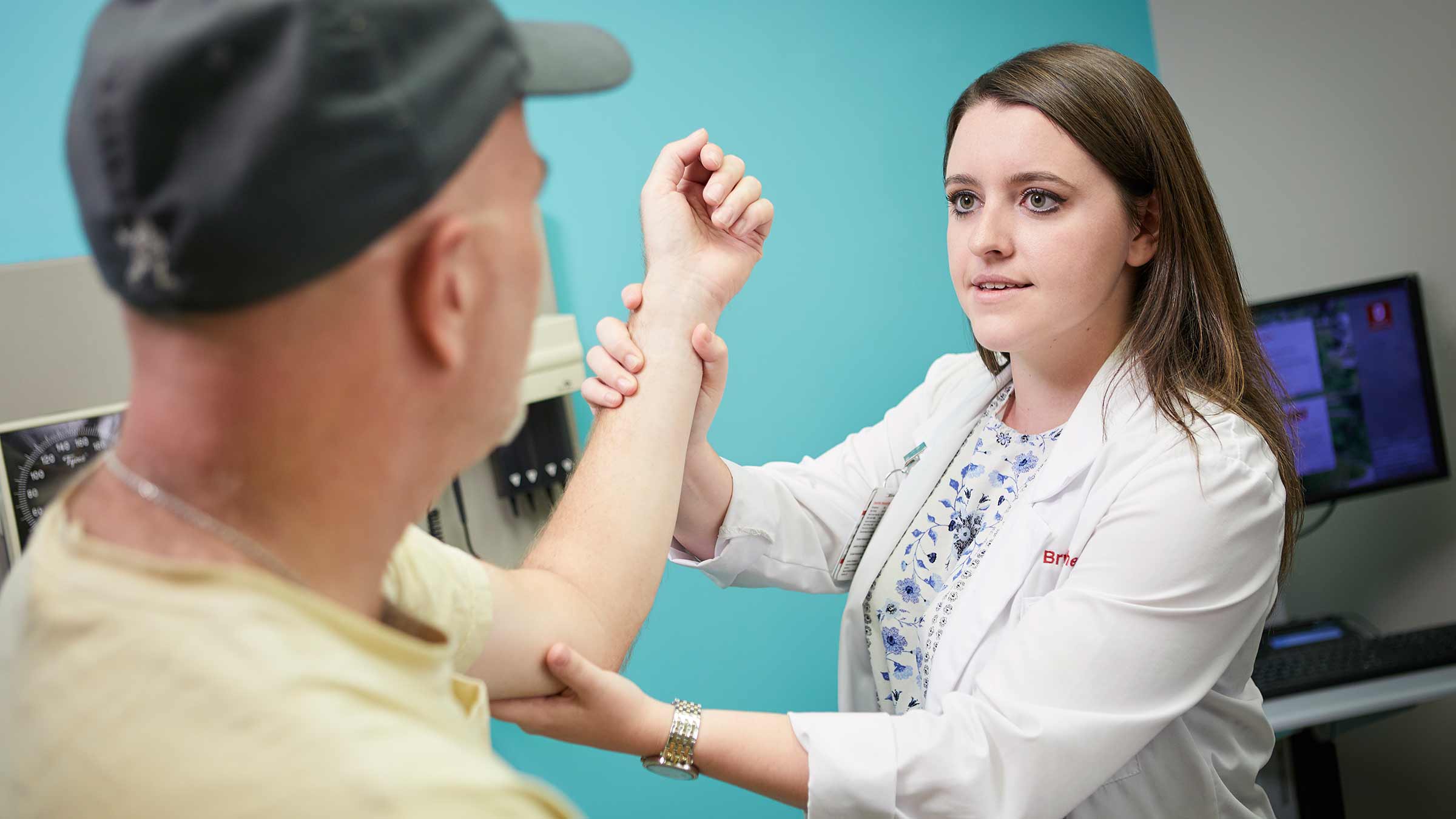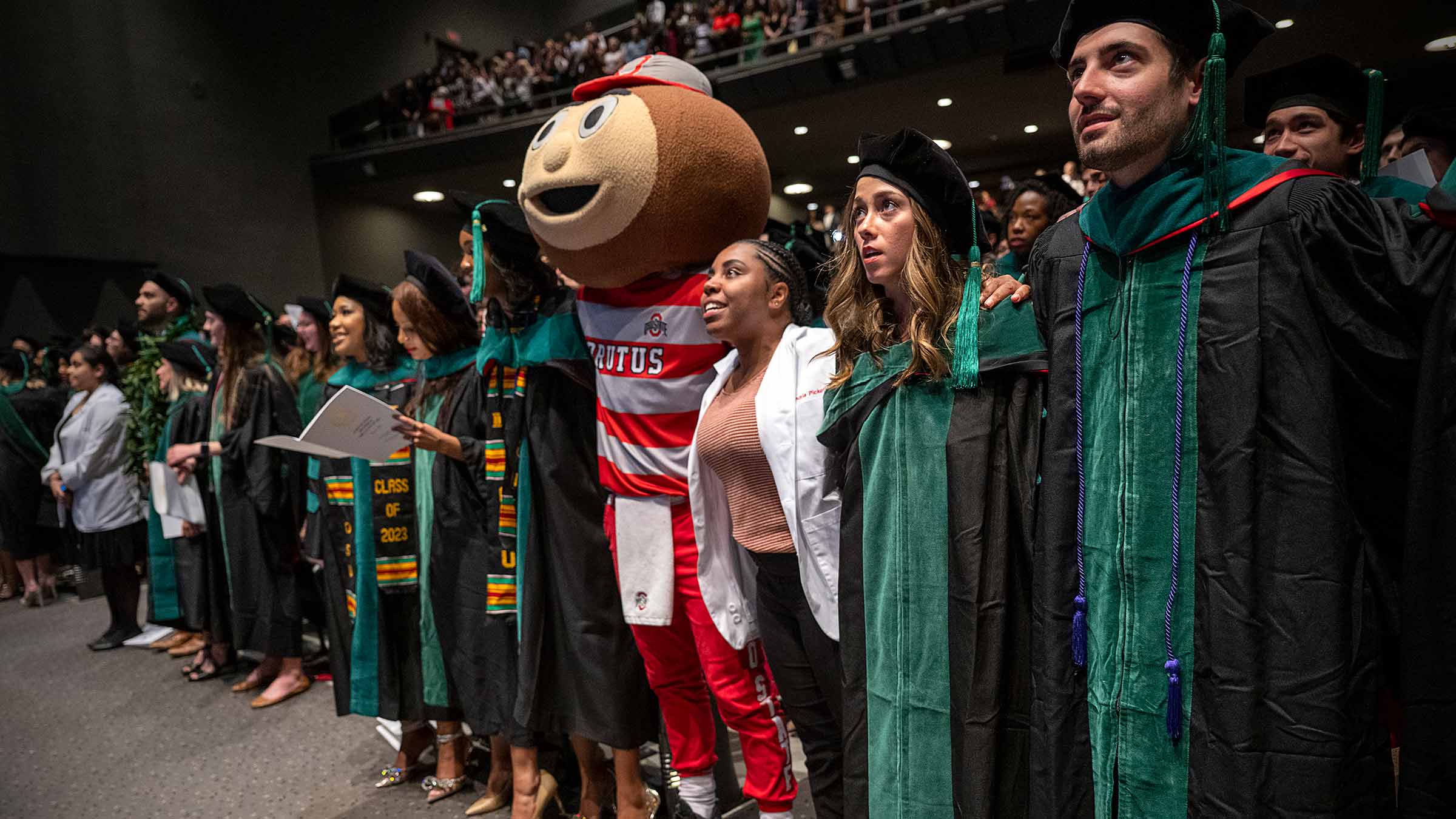Medical school journey year by year
An inside look at how students gain foundational knowledge and personal growth
The road to becoming a physician begins with the ability to navigate a highly selective admissions process. Then, once accepted, the White Coat Ceremony heralds the start of medical school.
“Donning the white lab coat for the first time is the official entry into a rigorous learning journey,” says Carol R. Bradford, MD, MS, FACS, dean of The Ohio State University College of Medicine. “It symbolizes joining an amazing group of individuals who have sworn to be caring, empathetic, devoted and selfless — and who are bound to the noble mission of caring for humanity.”
Starting day one of their training, learners will develop essential skills like patience, humility and dedication. They also get the chance to meet and treat patients during their first year of study. The state-of-the-art Interdisciplinary Health Sciences Center provides learners the space, technology and resources they need to be successful on their journey to become the next generation of leaders in health care.
“What we do here matters,” Dr. Bradford says. “And I am proud to say that one of our greatest strengths continues to be providing an unparalleled wealth of opportunities and support for our learners.”

First year: White coats, bright futures
The first year of medical school marks our learners’ entry into an innovative profession and learning the foundation of medicine — anatomy. While developing a deeper understanding of the body’s interior, students create dynamic relationships with professors, other learners and themselves.
For Kyle Yamat, year one signaled his readiness to combine passion and purpose. Yamat took a gap year after graduating from Ohio State with a bachelor’s degree in molecular genetics and a minor in business. While he worked as an anesthesiology technician at a local hospital, he explored ways to combine his love of cooking with health and nutrition.
He and a friend were both applying to medical school. Together, they collaborated to combine by starting a nonprofit, Cook With Communities (CWC), which provides interactive nutrition education and cooking classes in vulnerable communities.
“I transitioned into medical school with an established focus on ensuring I could incorporate CWC into the busy schedule that comes with medical school,” Yamat says.
College faculty serve as coaches to students; encouraging schedule flexibility so learners can better manage their time and maintain balance in their coveted personal time. Yamat says this support makes him have a more holistic experience as a student and a young person.
“I’m very much of a hands-on learner and can remember things much better if I can tie them down to experiences,” Yamat says. “Physicians and residents come into the anatomy lab to teach us their clinical cases as it pertains to the anatomy we’re learning.”
Yamat says that studying and pursuing his passion at the same time is the hardest thing he’ll ever do but having autonomy over his time has made working with CWC feasible.
Over the summer, he plans to focus on growing the nonprofit and graduate CWC chapter he has established at the college. He’ll also pursue clinical and shadowing opportunities to inform which medical specialties he wants to focus on in his second year of study.
“The network I’ve built over the past five years is allowing me to explore community in a more intimate way,” he says.
Second year: Preparing for hands-on medicine
Morgan McCabe started her second year of medical school eager to put her knowledge to use. She was particularly excited to continue training in the college’s advanced simulation center.
“I took what I learned in my first year and then got to practice it in ultrasound and obstetrics and gynecology,” McCabe says. “Using our ultrasound patient simulator, Eve, I get to see pathology that I’ll see when I begin my rotations in my third year.”

McCabe says that year two has allowed her to investigate more deeply the specialties she’s interested in, like public health and reproductive health. She’s shadowed providers in labor and delivery, an area where she’s considering dedicating her life.
For now, McCabe is finishing coursework, final exams and getting ready to enter an intense period of preparation for the first licensing exam. She’ll complete the test before she begins her third year of medical school, which is when she’ll start rotations in various specialties.
“You have to make sure you keep doing things that make you successful,” McCabe says. “For me, that means prioritizing my relationships and making sure I’m taking care of myself.”
As she gets ready to leave the lecture halls to engage with patients in real-world settings, McCabe says it’s an important time to remember why she chose Ohio State.
“Getting to experience meaningful patient interaction reminds me why I went to medical school,” McCabe says.
Third year: Preparing for residency and next-level training
Brad Loomis says year three is the highlight of medical school and it has brought him full circle. Moving around and learning in different specialty rotations has helped him gain new wisdom and perspective.
“You get to see so much. You see so many patients with different conditions and can look at their conditions from different angles when you’re part of a big health care team,” Loomis says. “I’ve learned that patient care involves an interdisciplinary team working together, which results in the best outcomes.”

Working with faculty on clinical rotations allows him to contribute to the medical team’s treatment of patients and to use the information and skills he’s acquired along the way.
“I get a set of labs or an imaging report and the attendings ask me what I think,” Loomis says. “I can put some of the pieces together and see my own growth.”
Loomis helps first and second year learners with their anatomy training by serving as a tutor for the peer anatomy team. He also serves on the board of the First-Generation Medical Student Interest Group. Connecting with anesthesiologists during rotations helped him see himself working in that specialty.
“I really like the procedural component of anesthesiology, but also when things don’t go as planned, you have to move quickly to plan B or C.”
Loomis says he chose Ohio State because he knew the institution supports students in all aspects of what they want to accomplish in their education and career.
Fourth year: Moving from education to becoming a physician
The reality of the upcoming Match Day — when she’ll find out where she places for the next part of her training, medical residency — followed by graduation, where she’ll officially become a physician, hasn’t quite hit Jessica Sciuva yet.
“This has been so many years in the making,” Sciuva says. “I think it will feel more real when I know where the next chapter will take me.”
Sciuva began medical school right after the start of the COVID-19 pandemic. She and her classmates participated in a virtual anatomy course and didn’t get to know each other face to face right away. She says finishing the semester and experiencing Match Day and convocation together will be meaningful.

She’s applied and interviewed for residency positions across the country. An exciting opportunity during her final semester is to complete her Global Health elective by going to Thailand for a month.
“I’m getting the opportunity to rotate in a lower-income country with underserved populations,” Sciuva says. “I’m very honored to have trained at Ohio State and take my unique experience with me.”
Sciuva has spent many hours as a volunteer treating patients at the Columbus Free Clinic, mentoring medical students and gaining practice in the field of obstetrics and gynecology.
“Being a role model for medical students is exciting for me,” Sciuva says. “I get to show them how amazing the Ob/Gyn field is, and how we get to treat patients using the skills we’ve learned.”
Sciuva’s participation in elevating medical education mirrors the college’s efforts.
“I chose Ohio State because of our exposure to community service and being able to treat patients with diverse backgrounds,” Sciuva says. “Soon, I’ll join the community to recognize my classmates and celebrate our reception into the profession of medicine.”
Bright futures: lifelong learning and service
Even after passing the board exam and spending three to seven years as a resident in an academic medical institution, the journey to become physicians and researchers takes time. To practice medicine is to practice lifelong learning; the experiences students encounter during medical school must prepare them to meet the continually evolving field of medicine.

The future of medicine is at Ohio State
Our innovative curriculum, life-altering biomedical research and unsurpassed patient care make us one of the top medical schools in the country.
Explore our programs




